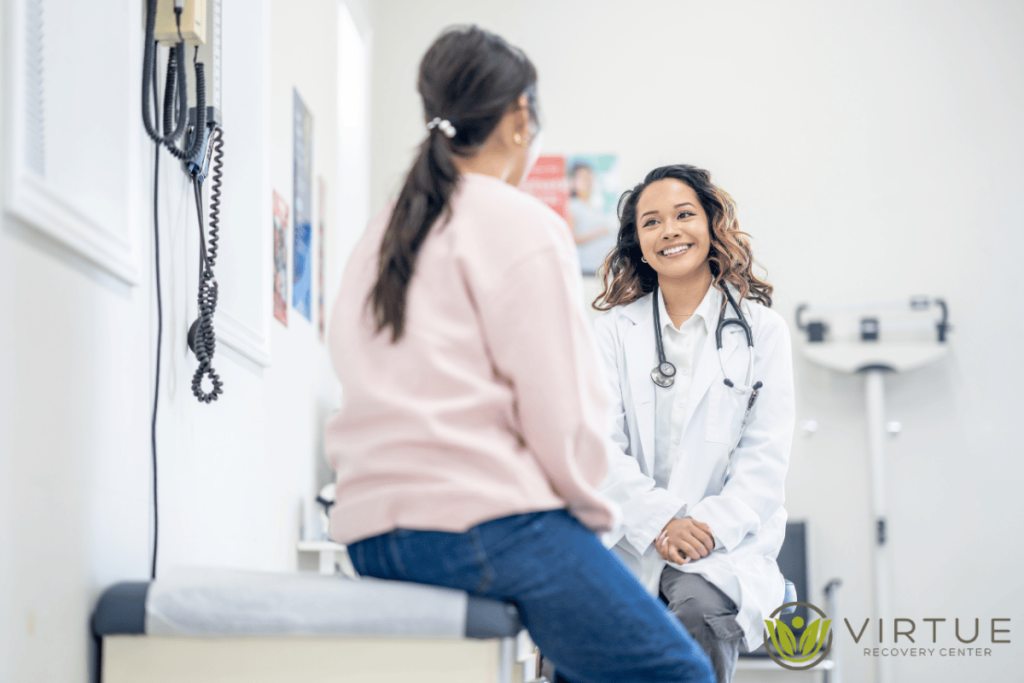Key Takeaways
- Women with cocaine-related eating disorders have two problems: they are addicted to drugs and they eat in a way that is not normal. They need specialized, integrated care for both.
- A Partial Hospitalization Program can help with both addiction and eating disorders by giving more structure than outpatient care but less restriction than inpatient care.
- When treating cocaine use and eating disorders at the same time, drug addiction programs need to include therapy, medical supervision, behavioral interventions, and nutritional rehabilitation.
- Early intervention, ongoing follow-up, and relapse prevention are essential components for success in programs such as the Partial Hospitalization Program for women with cocaine-related eating disorders.
Introduction
Women who are addicted to cocaine and have disordered eating often find themselves on a steep and dangerous slide. A Partial Hospitalization Program provides a therapeutic framework that offers structured, daily care without completely removing the person from their home life. This allows for the treatment of both the addiction and the eating disorder at the same time. When both substance use and eating habits have become life-threatening, women in these programs benefit from close monitoring, frequent therapy, and nutritional support. Cocaine changes how hungry someone feels, how they perceive weight, how moods are controlled, and how impulses are managed. When combined with eating disorders such as bulimia nervosa, binge eating disorder, or other variants, the risks escalate: physical deterioration, psychiatric comorbidity, and a significant likelihood of relapse.What Are the Connections Between Cocaine Addiction and Women’s Eating Disorders?
Women who are addicted to cocaine often say that their appetite and eating habits are very different from what they used to be. Some individuals may utilize cocaine to mitigate hunger or facilitate weight loss. In contrast, others may engage in bingeing and purging as a result of mood instability or impulsivity exacerbated by stimulant consumption. Studies show that women often have both substance use disorders (SUDs) and eating disorders at the same time. If both are not treated at the same time, the results are worse. The National Institute of Mental Health also emphasizes that eating disorders are serious mental illnesses that often co-occur with substance use, requiring integrated care. Cocaine’s physical effects, like stomach problems, malnutrition, electrolyte imbalance, and stress on the heart, make eating disorder symptoms worse. Psychological effects, such as anxiety, depression, and distorted body image, complicate matters further. So, a drug addiction program that only treats the drug use and not disordered eating is often not enough.
How Does Partial Hospitalization Work for Co-Occurring Conditions?
A Partial Hospitalization Program (PHP) is a type of care that falls between inpatient hospitalization and regular outpatient therapy. Federal rules, such as those governing Medicare eligibility and coverage, stipulate that PHPs provide structured outpatient psychiatric services without overnight stays. These services usually include at least 20 therapeutic hours per week. The Partial Hospitalization Program offers women with Cocaine Addiction and eating disorders:- Multidisciplinary teams of psychiatrists, addiction specialists, dietitians, and therapists who work together.
- Individual and group therapy that focuses on both eating disorders and substance abuse.
- Monitoring health: keeping an eye on vital signs, lab work, and nutrition status.
- Nutritional rehabilitation including meal planning, teaching about nutrition, and restoring proper eating habits.
- Cognitive behavioral therapy (CBT), dialectical behavior therapy (DBT), and relapse prevention as key behavioral interventions.
Why Are Eating Disorder Treatments Different When Cocaine Is Involved?
Eating disorders in women who use cocaine tend to show up in different ways:- More impulsive behavior, more cycles of bingeing and purging, and more weight changes.
- Higher medical risk: damage to organs and imbalances in electrolytes.
- More serious psychiatric comorbidities: mood disorders, anxiety, and the risk of self-harm.

What are the benefits of implementing a Partial Hospitalisation Program for Women?
Women who join these programs also benefit from clear Cocaine to Recovery milestones: detox, stabilization, psychological insight, and then relapse prevention. Here are some other benefits:- Lower costs for hospital stays and high-quality care.
- Ability to balance various aspects of home life, such as caring for family, completing work or school tasks, and undergoing intensive therapy simultaneously.
- A multidimensional approach to treating both cocaine addiction and eating disorders improves the chances of long-term recovery.
Conclusion
To help women with eating disorders linked to cocaine, a treatment model that is both intense and caring is needed. A Partial Hospitalization Program gives that kind of structure. It provides a safe, supportive place to treat both the addiction and the eating behavior at the same time, with medical, psychological, nutritional, and psychiatric care. If you or someone you care about is dealing with both cocaine use and an eating disorder, recovery is possible. Call Virtue Recovery Las Vegas today at Tel: 866.520.2861 to find out more.Can Cannabis Use Influence the Effectiveness of a Partial Hospitalization Program for Women with Cocaine-Linked Eating Disorders?
Research suggests that cannabis use may complicate treatment outcomes for women in a partial hospitalization program addressing cocaine-linked eating disorders. The risks of combining cocaine and cannabis can manifest as heightened anxiety or altered coping mechanisms, potentially undermining recovery and diminishing the effectiveness of therapeutic interventions.









